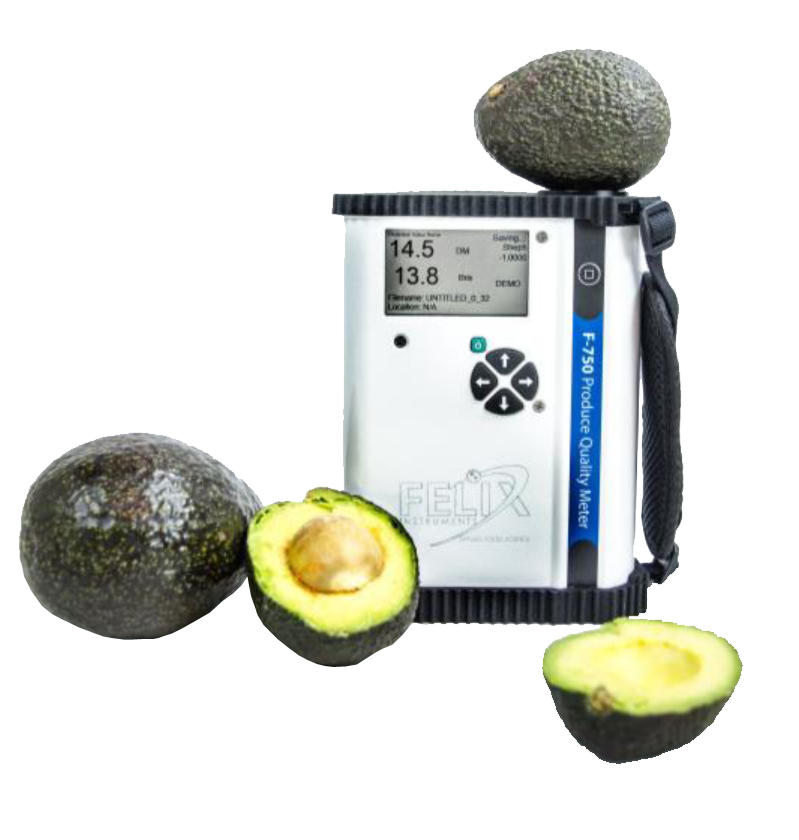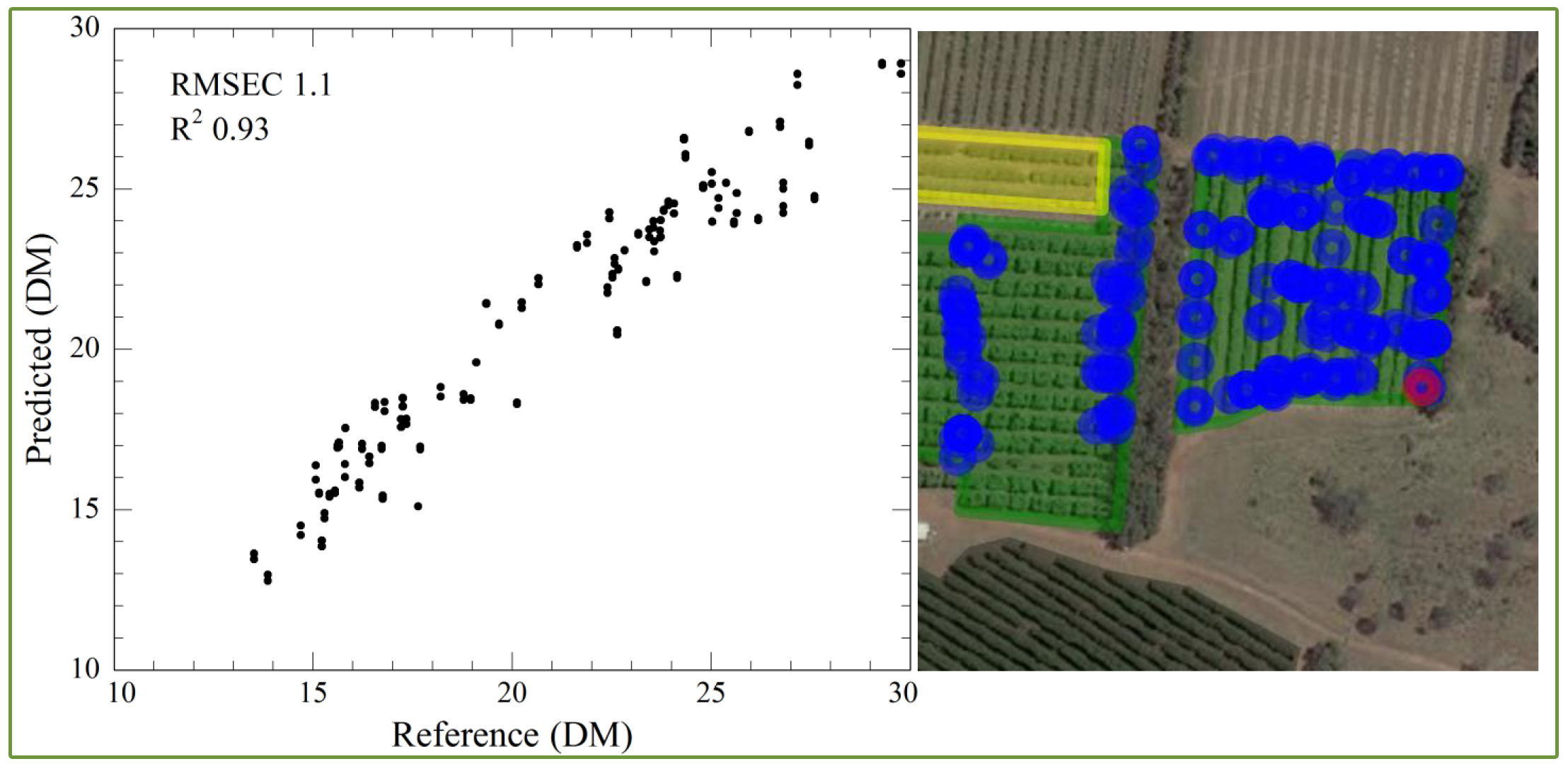
Through Skin Measurements of Dry Matter in Shepard Avocado
Dry Matter is an important indicator of quality in Avocados, useful in estimating the harvest date and in processing center operations. The traditional method for Dry Matter measurement is both destructive and time-consuming.
A study was conducted with the F-750 Produce Quality Meter for non-destructive measurements of Dry Matter in Shepard Avocado, using 71 fruit for through skin calibration. Reference values were assessed with the industry standard oven method. The F-750 was calibrated using Model Builder Software. The F-750 Produce Quality Meter estimated Dry Matter of Shepard Avocado fruit with a calculated root mean square error of calibrartion of +/-1.1DM.

Materials and Methods
In February 2017, 71 Shepard Avocado were selected from incoming field bins. Spectra was collected through the skin, using the F-750 by placing the Avocado’s against the F-750 . The fruit were then destructively measured for Dry Matter. The spectral range 729-975 nm used by Model Builder Software to correlate the F-750 spectral signal and corresponding Dry Matter values. The resulting regression data was analyzed for linearity, root mean square error, and leave-one-out cross validation error to determine the applicability and accuracy of the created model. To account for any variation in instrument performance, two scans of each cheeks were taken at the same temperature.
Results and Discussion
A strong correlation existed between spectral data and collected reference values, with a model prediction R2 of 0.93 for Dry Matter. Figure 2 displays this correlation and demonstrates the consistency of measurement with-in the dataset. The Root Mean Square Error of Calibration (RMSEC) for the calibration set was 1.1 % Dry Matter, illustrating the accuracy of the created model. This value represents a measure of the expected accuracy when the unit is used with future unknown samples. The RMSECV is equivalent to the expected SD of errors.
Figure 1. A) Accuracy of F-750 predictions B) GPS based mapping of field measurements. Blue marks indicate mature fruit. Red marks
indicate fruit identified as immature. Yellow block indicates when a paddock is nearing harvest criteria.
Further Reading and Supporting Science
Du, X., Kurnianta, A., McDaniel, M., Finn, C., Qian, M. (2010). Flavour profiling of ‘Marion’ and thornless blackberries by instrumental and sensory analysis. Food Chemistry, 121: 1080-1088.
Huang, L., Wu, D., Jin, H., Zhang, J., He, Y., Lou, C. (2011). Internal quality determination of fruit with bumpy surface using visible and near infrared spectroscopy and chemometrics: A case study with mulberry fruit. Biosystems Engineering, 109: 377- 384.
McGlone, A., Jordan, R., Seelye, R., Clark, C. (2003). Drymatter – a better predictor of the post-storage soluble solids in apples? Postharvest biology and technology, 28: 431–435.
Kagawa, Y. Quality standards and inspection. http://iv.ucdavis.edu/files/24417.pdf
This application note is provided, with permission, courtesy of Felix Instruments

